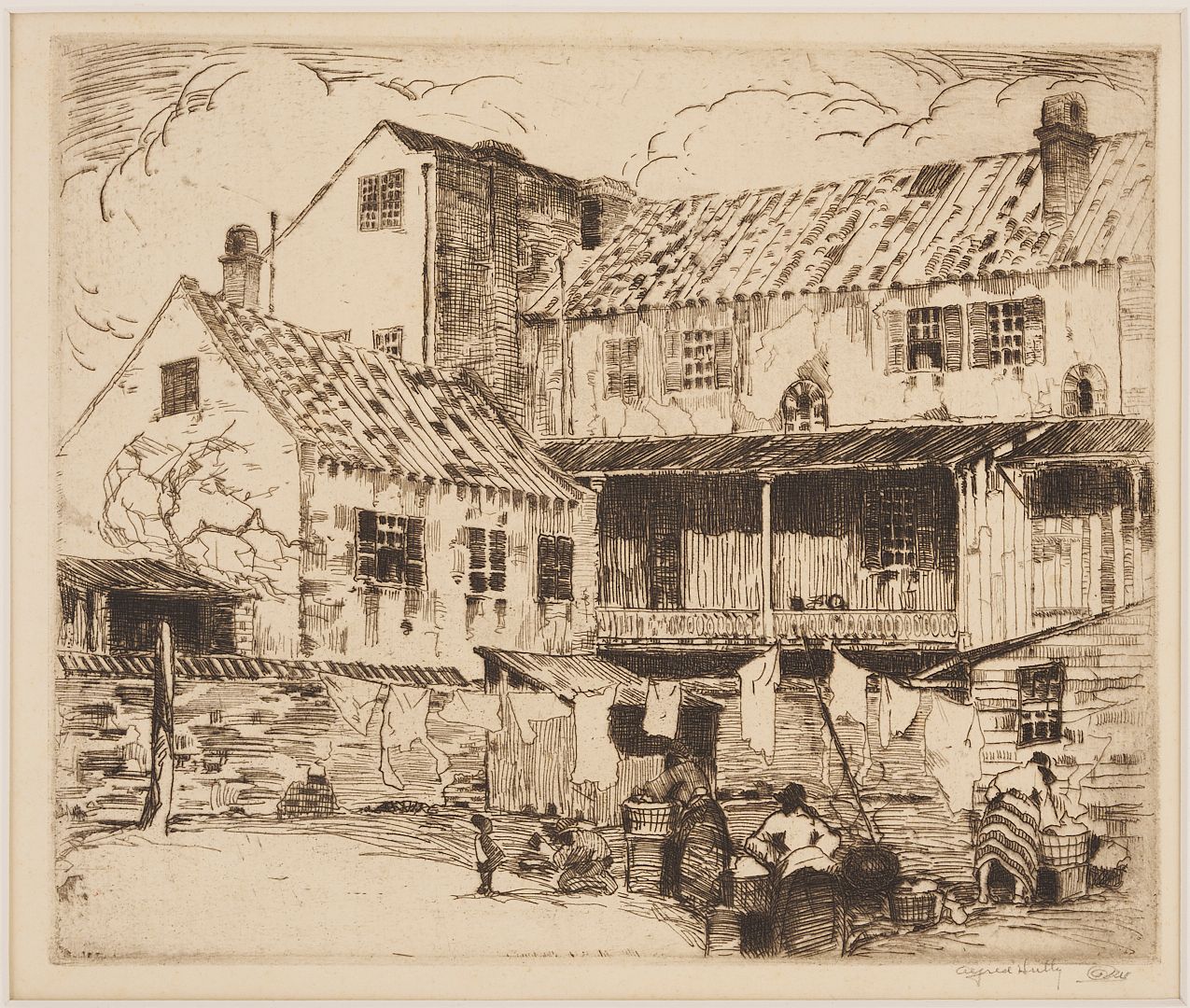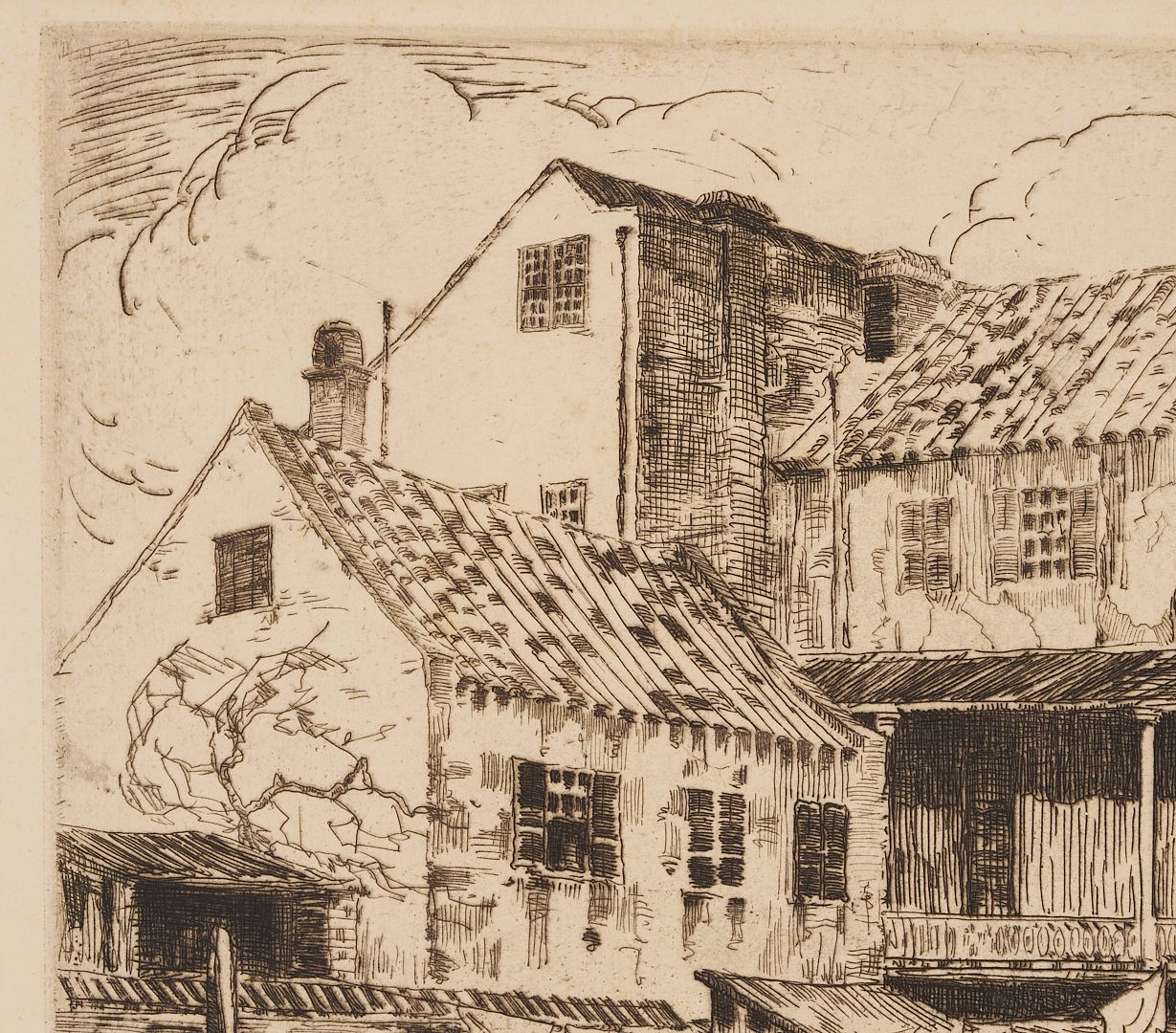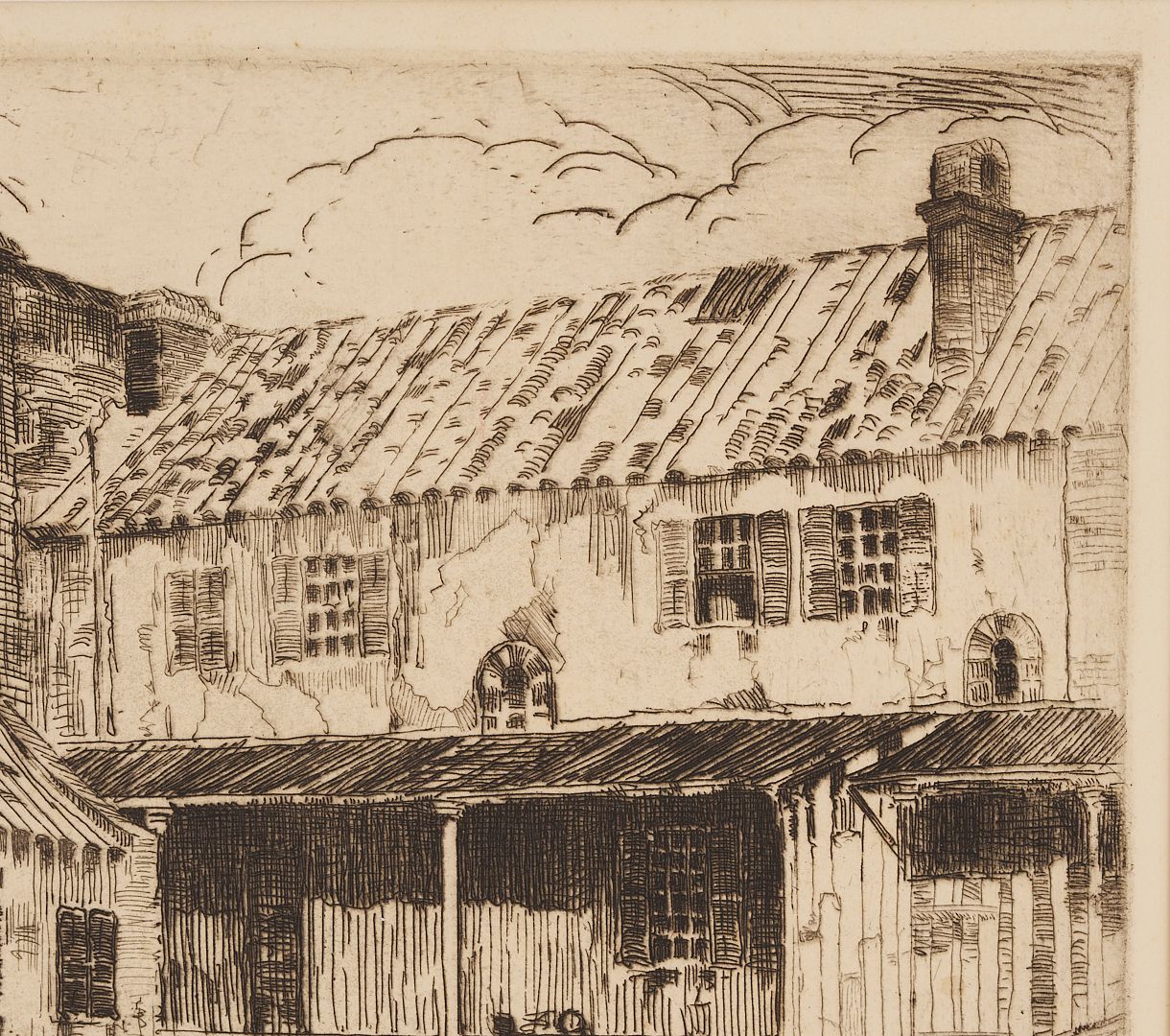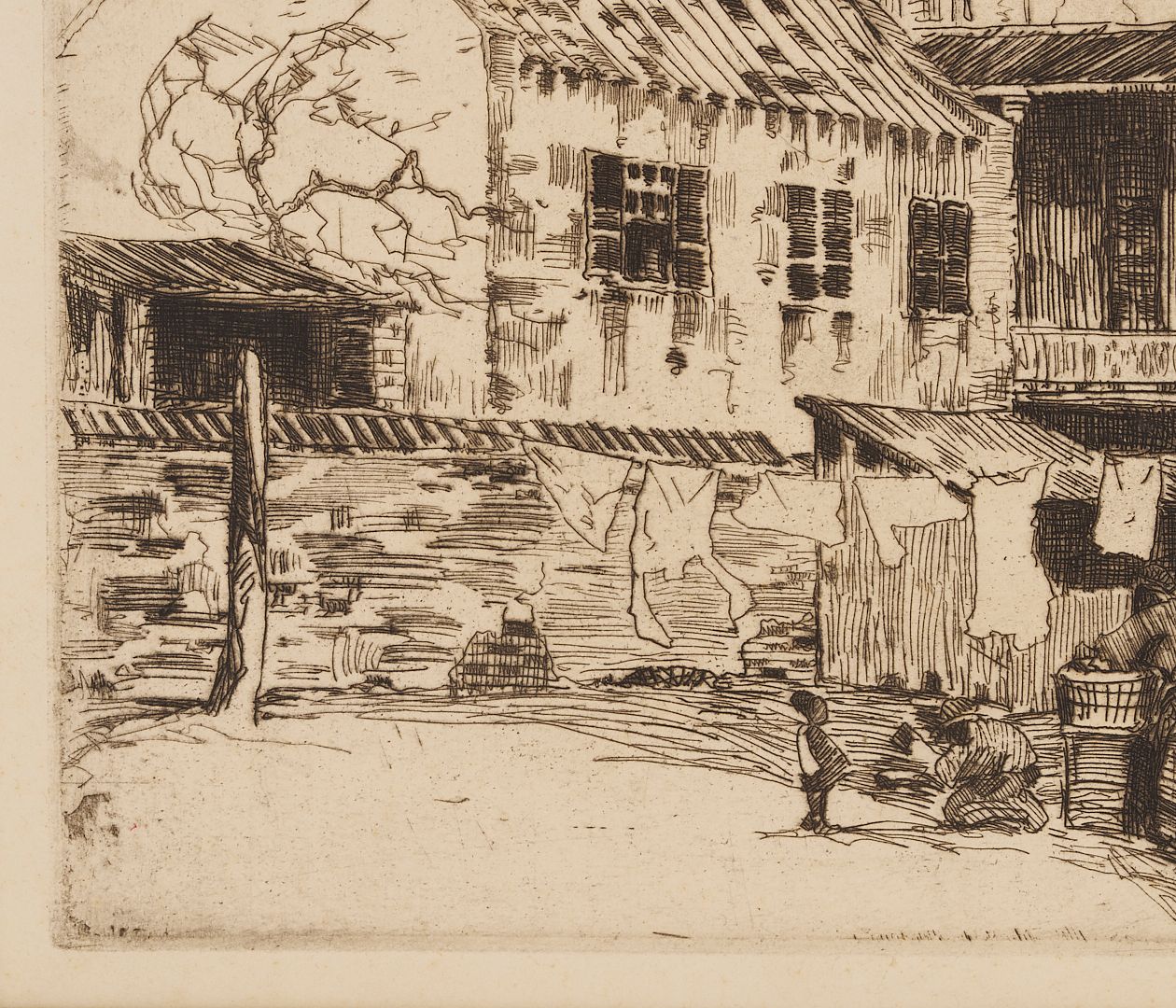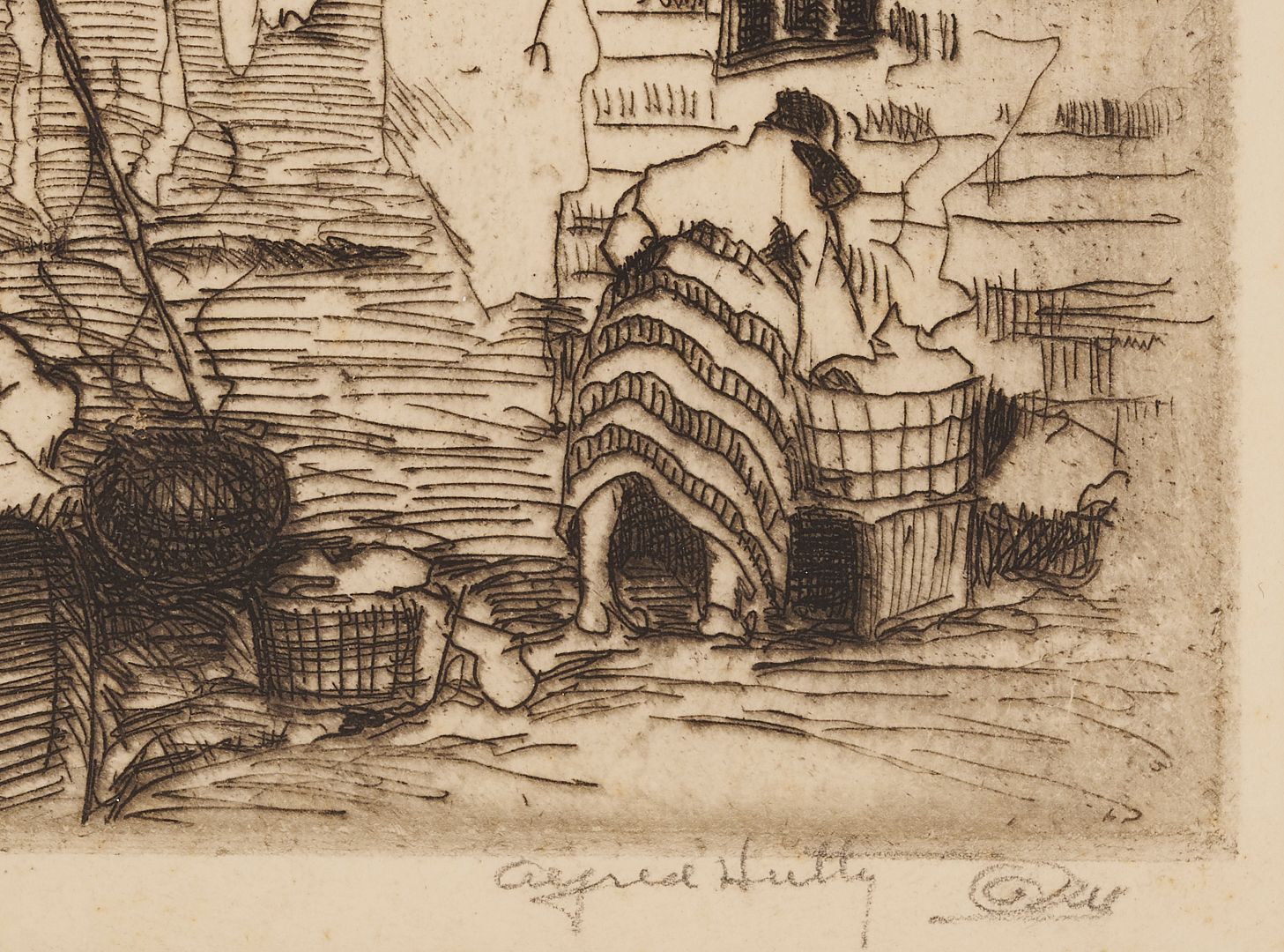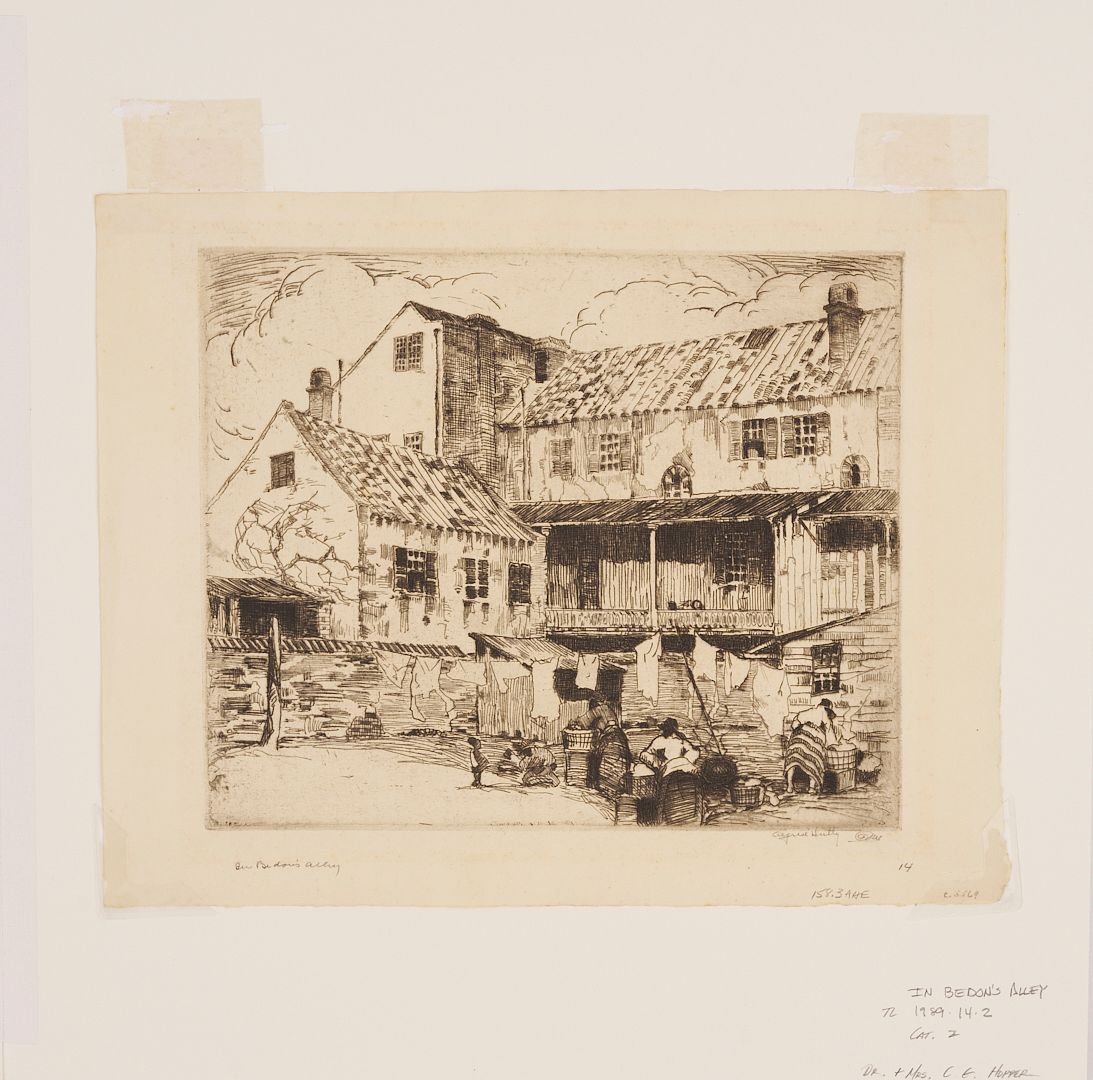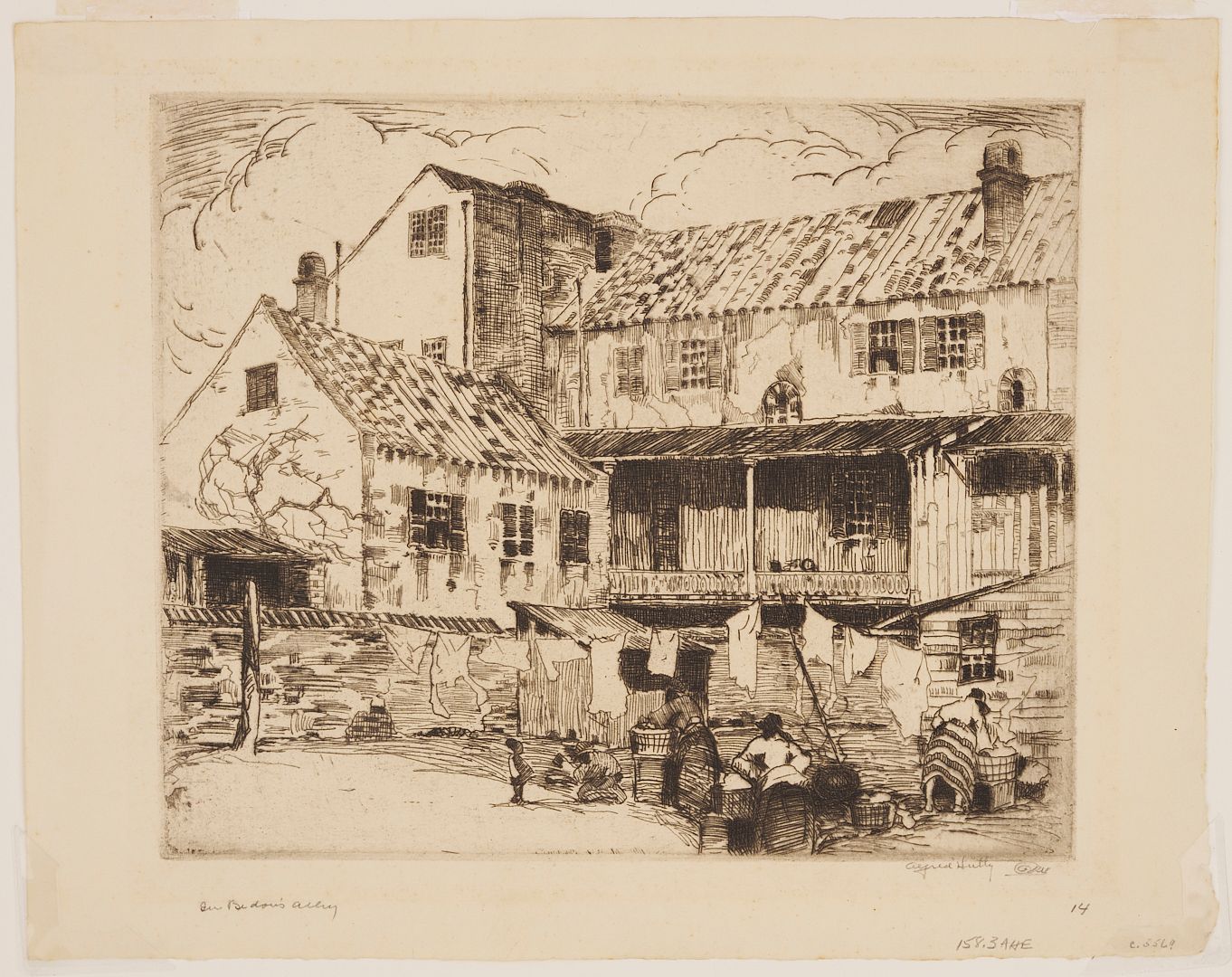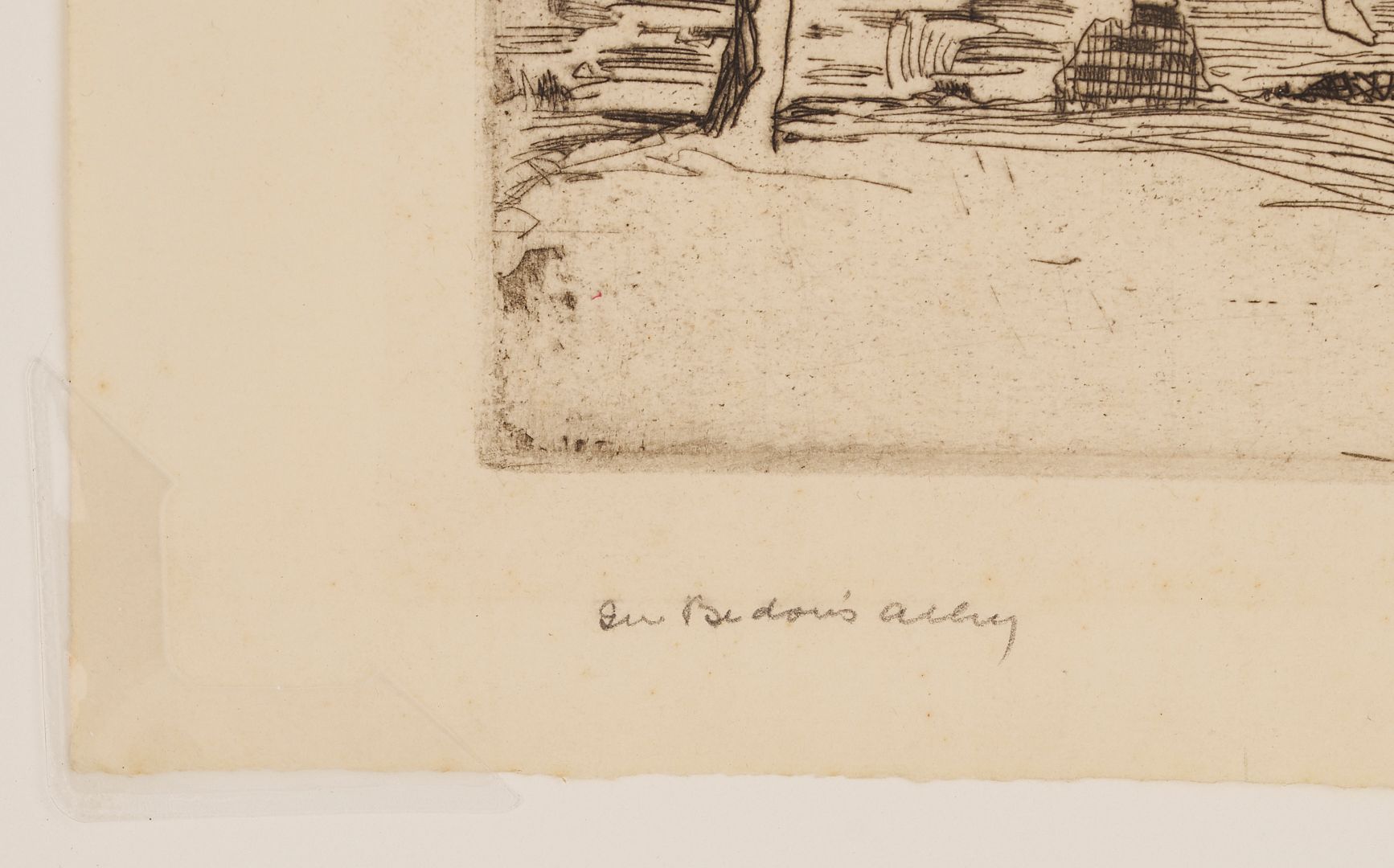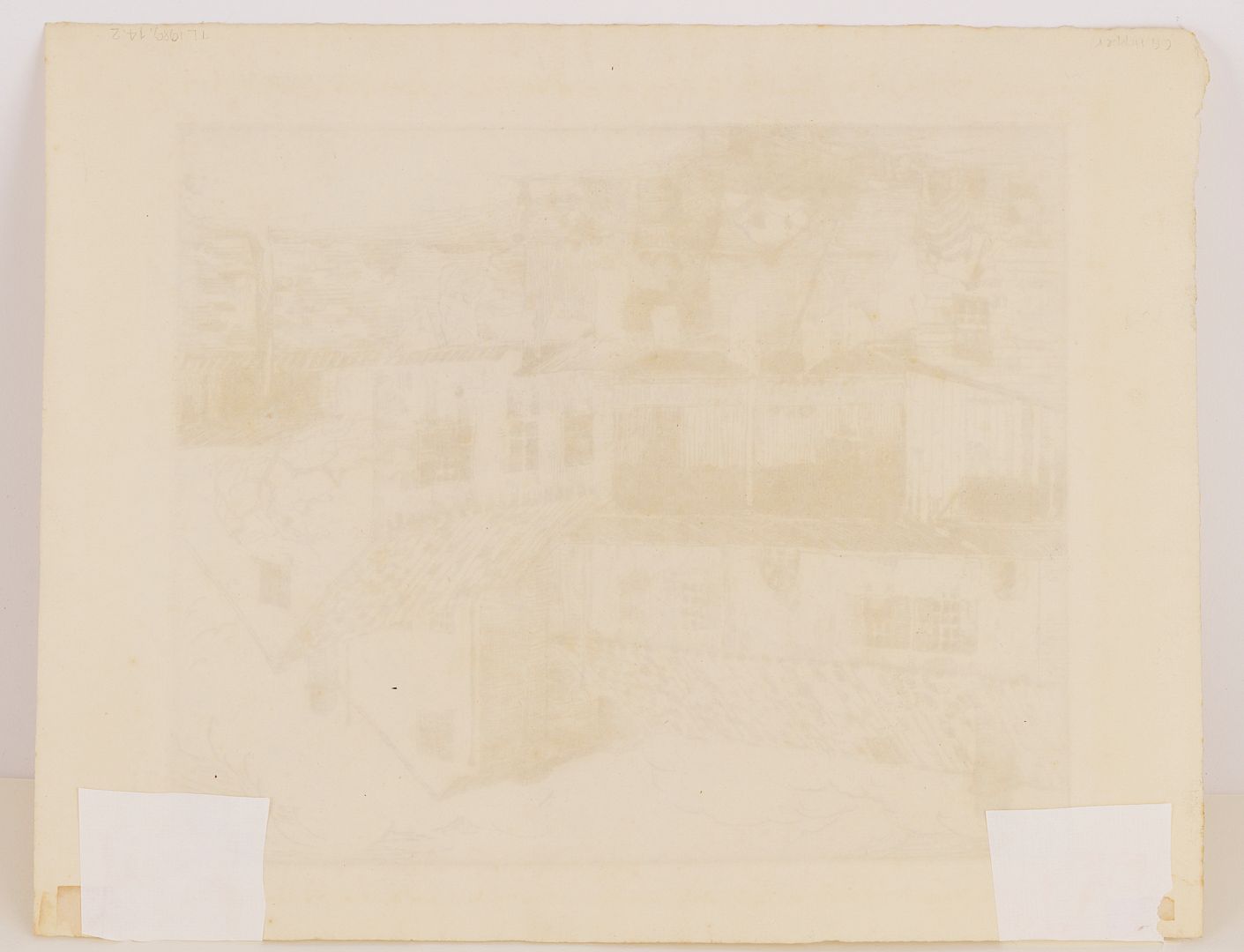SOLD! for $5,856.00.
(Note: Prices realized include a buyer's premium.)
If you have items like this you wish to consign, click here for more information:
Selling with Case- Low Estimate: $800.00
- High Estimate: $1,000.00
- Hammer Price: $4,800.00
- Share this:
Alfred Heber Hutty (Charleston, South Carolina, 1877-1954) etching entitled “In Bedon’s Alley,” 1921. Three African American women wash and dry clothing in a yard or alley behind a building in Charleston, South Carolina. A kneeling figure and a small girl occupy the center of the composition. Signed “Alfred Hutty” in pencil along with snail cypher, lower right. Titled lower left, under mat. Also with old inventory numbers in pencil to lower right margin. Sheet: 9 1/8″ H x 11 7/16″ W. Sight: 7 7/8″ H x 9 5/16″ W. Mat: 14″ H x 14″ W. Biographical Note: “One of the principal artists of the Charleston Renaissance, Alfred Heber Hutty was a native of Grand Haven, Michigan. He spent most of his youth in Kansas City, He was employed as a glazier and that led to his pursuit of stained-glass design, initially in Kansas City, later in St. Louis, and finally In New York City, where he was employed by the Tiffany Studios. He studied with Birge Harrison at the Art Students League and at the nascent art colony in Woodstock, New York, where he was among the first artists to settle full time…He began dividing his time seasonally between homes and studios in Woodstock and Charleston and soon became a fixture in Charleston’s art circles. From 1920 to 1924 he was the director of the Carolina Art Association (now the Gibbes Museum of Art), and in 1921 he was a founding member of the Charleston Etchers’ Club. His principal subject, the local scene, naturally led to an interest in historic preservation. The Society for the Preservation of Old Dwellings, among other groups, provided opportunities for artists–among them, Hutty, Alice Ravenel Huger Smith, and Elizabeth O’Neill Verner–to create work that was deeply rooted in Charleston’s past.” (Source: Morris Museum of Art, “Alfred Hutty: Painter, Printmaker, Preservationist”)
PROVENANCE: Private Southern collection.
CONDITION: Overall very good condition. With negligible toning and foxing to sight area. Sheet is hinge-mounted to mat with archival tape affixed to upper edge en verso.
